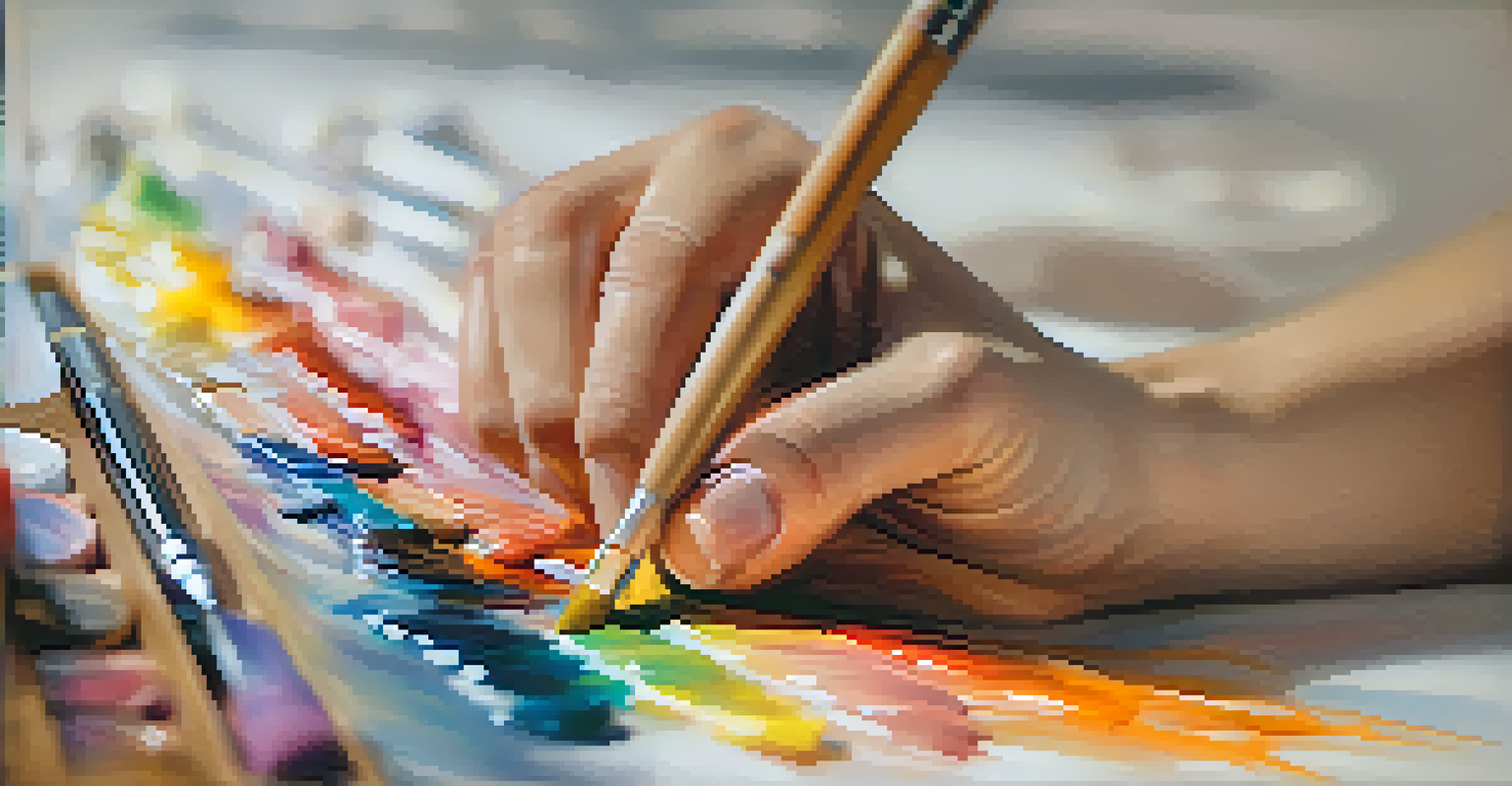Exploring the Ethical Implications of Art Reproduction Practices

Understanding Art Reproduction: What It Is and Why It Matters
Art reproduction refers to the processes used to create copies of original artworks. This can include prints, digital reproductions, or even replicas made by artisans. Understanding this practice is crucial as it raises questions about authenticity, ownership, and value in the art world.
Art is not what you see, but what you make others see.
For many, owning a reproduction allows access to famous works that might otherwise remain out of reach. However, this also leads to a complex debate about whether reproductions diminish the value of the original pieces or enhance appreciation for them. It's a bit like tasting a dish at a restaurant; while it may not be the same as the chef's special, it gives you a flavor of what to expect.
As technology advances, so does the capability to create more accurate reproductions, making it even harder to distinguish between original and copy. This blurring line compels us to consider the implications of reproducing art in a society that values authenticity and originality.
The Role of Copyright in Art Reproduction Practices
Copyright law plays a significant role in protecting the rights of artists and their works. It grants creators exclusive rights to reproduce their art, ensuring they receive recognition and financial compensation. However, the duration of copyright can create challenges, especially as it varies across different countries.

When a work enters the public domain, it can be freely reproduced, leading to debates about the ethical implications of using such pieces. While this opens up opportunities for creativity, it can also lead to commercial exploitation, where reproductions are sold without proper attribution. Think of it as borrowing someone’s recipe; while you can share it, it's polite to give credit to the original chef.
Art Reproduction and Accessibility
Art reproductions make famous works more accessible to a wider audience, prompting debates about authenticity and value.
Navigating copyright laws can be complex, particularly in an age where digital art and online sharing are prevalent. It's essential for creators, buyers, and distributors alike to understand these laws to avoid infringing on artists' rights.
The Ethical Dilemma of Selling Art Reproductions
Selling reproductions of artwork raises ethical questions about transparency and fairness. When reproductions are marketed as 'original' or 'limited edition,' it can mislead buyers regarding the value and authenticity of what they're purchasing. This is similar to selling a fake designer handbag; the buyer believes they are getting a luxury item, but it's really just an imitation.
The greatest artist is not necessarily the one who produces the best work, but the one who inspires the most people.
Ethical selling practices require clear communication about the nature of the reproduction to ensure buyers make informed decisions. This means labeling items accurately and providing information about the original artist and the reproduction process. In a world where online shopping is commonplace, transparency becomes even more critical.
Ultimately, balancing profit with ethical responsibility can be challenging for many businesses. They must weigh the financial benefits of reproduction sales against the potential harm to the original artist's reputation and livelihood.
Cultural Appropriation vs. Artistic Inspiration
The line between cultural appropriation and artistic inspiration can be thin and often contentious. When artists draw from cultural symbols and practices, it can lead to a rich tapestry of creativity, but it may also raise concerns over respect and representation. It's like borrowing a piece of someone else's culture; doing so requires sensitivity and understanding.
Reproducing art from different cultures can perpetuate stereotypes or distort meanings if not approached with care. Artists and companies must navigate these waters thoughtfully, ensuring that their work honors the culture it draws from rather than exploiting it. This calls for conversations about who gets to tell which stories and how they do so.
Ethics of Selling Reproductions
Selling reproductions ethically requires transparency about their nature to avoid misleading buyers regarding authenticity.
Engaging with other cultures can be a powerful way to foster understanding, but it also requires a responsibility to engage ethically. Understanding the background and significance of the art can lead to a more respectful and enriching creative process.
The Impact of Technology on Art Reproduction Ethics
Technology has revolutionized the way we reproduce and distribute art, but it has also raised ethical questions. High-quality digital reproductions can make art more accessible, but they can also lead to issues of authenticity and value. It's akin to a well-crafted replica of a classic car; while it might look the part, it lacks the original's unique history and charm.
Moreover, the ease of sharing art online means that reproductions can circulate without proper credit or compensation for the original artists. This creates a dilemma for creators who rely on their work for income and recognition. As digital platforms become more prominent, the need for ethical guidelines grows.
As we adapt to new technologies, it's crucial to establish best practices that honor artists' rights and promote ethical use of their works. This means creating frameworks that protect original creators while also embracing the benefits of digital reproduction.
The Value of Authenticity in Art and Reproductions
Authenticity in art is often linked to the emotional and historical context of the original piece. Many collectors and art enthusiasts believe that a work's value is inherently tied to its originality and the artist's intention. Imagine a family heirloom; it's not just a piece of furniture, but carries stories and memories that make it irreplaceable.
Reproductions can evoke similar feelings of connection, but they often lack the depth that comes with an original. This raises questions about the value we assign to art and whether reproducing it diminishes its worth or simply makes it more accessible. As art becomes more democratized, we must consider how this impacts our perception of value.
Technology's Impact on Art Ethics
Advancements in technology have transformed art reproduction but raise ethical concerns about authenticity and fair compensation.
Ultimately, the discussion around authenticity is complex and subjective. While some may find joy in owning a reproduction, others may feel it pales in comparison to the original, sparking ongoing conversations about what we value in art.
Fostering Ethical Practices in Art Reproduction
To navigate the ethical landscape of art reproduction, fostering open dialogue among artists, buyers, and sellers is essential. This can involve workshops, forums, and discussions that highlight the importance of ethical practices in the art world. Think of it as a community potluck; sharing ideas and experiences can lead to a richer understanding for everyone involved.
Encouraging artists to share their stories and intentions behind their work can enhance appreciation and respect for the original pieces. This transparency not only benefits artists but also helps buyers make informed decisions about reproductions. It’s about creating a culture of respect and understanding.

As we move forward, embracing ethical practices in art reproduction will involve collaboration and ongoing education. By prioritizing discussions around these issues, we can create a more respectful and sustainable art ecosystem for everyone.